Man in the spotlight (2).
An optical study of the aura of the hand.
1. The human aura and ‘hylic pluralism’
In almost all times and in almost all non-Western cultures, one hears testimony from people who claim that not only do we have a biological body, but that we also have a set of subtle bodies, which together make up the so-called aura. This would be located in some of the thinner layers around the biological body. Moreover, according to almost all non-Western cultures, some places are more charged with this mysterious fine substance than others. One speaks of a “Hylic pluralism. ‘Hylè’ is the Ancient Greek word for ‘substance’, ‘matter’, and pluralism refers to a multiplicity of species. Today, the possible existence of such a fine substance, which incidentally has nothing to do with nuclear physics, is strongly doubted in many circles. And if you are quite sure that something does not exist, then of course you do not go looking for it. It is different, however, if you have a silent suspicion that the last word has not been said on the subject at all. Then there is something in you that repeatedly urges you to keep on searching…
2. The Michelson and Morley experiment and fine dust.
In 1687, Isaac Newton had established the basis of classical mechanics with his book “Principia Mathematica. Here he assumed a fixed system of coordinates that unambiguously fixed every determination of place and time, as well as a standard time, a time, which, no matter where in the universe, would always pass at the same rate. With the strong development of science at the end of the 19th century, finding a fixed landmark in an ever-expanding star-space seemed an impossibility. So some hoped that the space between the stars might be filled with some kind of evenly distributed, extremely fine and invisible “stardust” that could serve as such a fixed reference. And this dust would also carry the light waves, just as air carries the sound waves.
The thought of such a fine substance, or “ether,” as it was then called, again came to the attention of science. Should such an ether exist, then the earth in its circular orbit around the sun would sometimes move with that ether, and sometimes against it. This would then lead to a difference in the speed of light, one thought. Light moving with the ether would then have a higher speed than light moving against it. And that is what Michelson and Morley wanted to investigate in 1887. However, they found no difference in speed and also no stardust. Since then the belief in the existence of the “uniform ether” as a propagation medium for light has been abandoned. And by generalization, the existence of any other kind of fine dust also fell into oblivion. In what follows we shorten the description of this famous experiment to the M&M experiment.
Start our investigation by effectively building the setup required to perform the foucault test. The test was described by French physicist Léon Foucault in 1858. Errors arising from the “grinding” of spherical mirrors can be made visible with it, and to a fraction of a wavelength of light. It is pretty much a standard test, and is known to just about all amateur mirror grinders. By deliberately grinding two disks of glass over each other, with a mass of hard grains between them, the upper disk of glass gradually becomes concave, and the lower one convex. Once finished, the former will be coated with a reflective layer and will eventually serve as a mirror for our viewer. Such a mirror captures a lot more light than our eye. The great luminosity of a telescope leads to the observation of stars that are otherwise invisible to us. We wonder if there are other, still hidden things that we can make visible with the viewer, such as an air turbulence around our hand. Or maybe we should let our eyes get used to the dark a little better, and only then look.
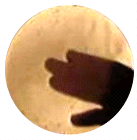
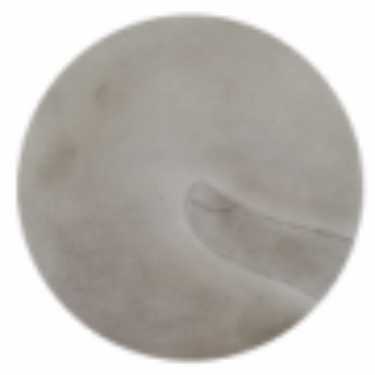
Then it becomes a story of “cones” and “rods. In daylight, the cones in our eye are a lot more active. They make sure we can distinguish colors well from each other. In darkness, our rods are more of theinst. Then they show us a dim play of light and shadow. And perhaps, even in our foucault setup, that darkness reveals something more than we would suspect at first glance. Therefore, we provide our light source with a dimmer. And we look into our setup not only when it is properly lit, but also when it is more shrouded in darkness. Doing so, we first see our hand quite illuminated, and then, in almost total darkness, we notice a faint, misty and luminous band around our hand.
4. Fine dust via interference from light.
In conducting the Michelson and Morley experiment, interference of light was used for the first time in history. The play of colors in a soap bubble or in a layer of oil on a pool of water, for example, are the result of optical interference, of the interplay of many rays of light.

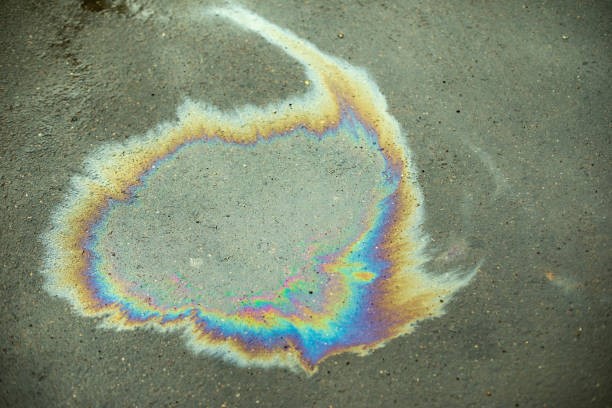
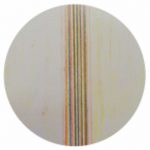
Or again: if we hold the screen of our cell phone (which is turned off) so that we see the sunlight or the light of a lamp reflected in it, we notice a number of beautifully colored lines on it as well.
Soap bubbles, oil slicks and cell phone screens have something of an “interferometer” due to their extremely thin and transparent layer. Basically, a light beam is reflected from the top or bottom of such a layer, splitting it into two sub-beams. Each part travels a slightly different path, or undergoes a different perturbation, where afterwards the beams are reunited. If the separate bundles are not distorted at all as they pass through the arrangement, then a well-defined interference pattern, e.g., a number of vertical stripes as shown in the drawing above on the right, arises at their union. However, if one sub-beam is different from the other, or if they both differ with respect to each other, then this can affect interference patterns. For example, the stripes may be distorted. The nature of the distortion then gives information about the quality or quantity of the transparent layer that was passed through.
5. Fine dust in a closed arrangement with uneven light path.
Entonces también tratamos efectivamente de construir algún tipo de interferómetro. Comprobamos si aparece una imagen de interferencia. Y luego vemos si podemos perturbar esta imagen metiendo la mano en la trayectoria de la luz.
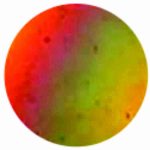
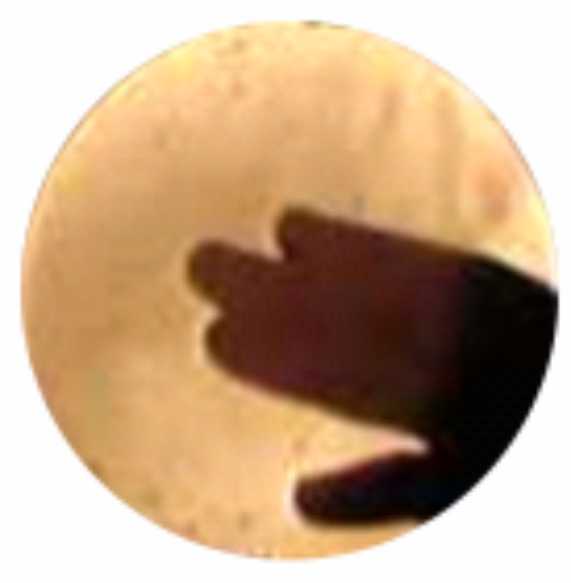
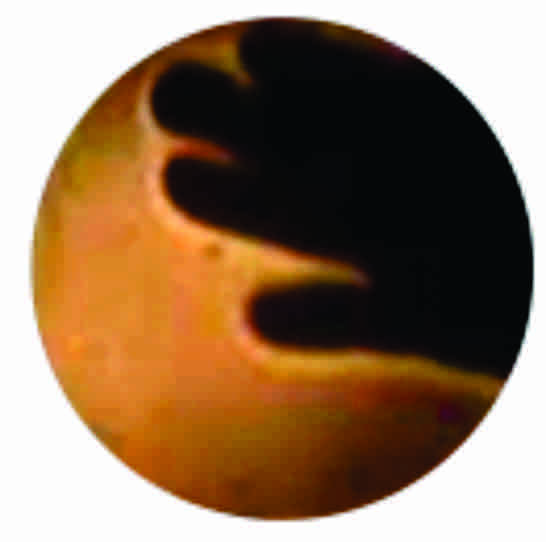
We manage to get nice interference lines in the image. Indeed, with particularly precise adjustment, one line even becomes quite a bit wider than the mirror surface. We see beautiful and intense interference colors. If we bring our hand into the light path, colored strings of rising air appear. Our hand is warmer than the air around it, creating these turbulences. These have a different index of refraction so there the interference colors change. If we then darken the setup to the maximum, we no longer see the wisps, but the faint, misty and luminous strip around the hand appears again, as we already observed in the dark setup of the foucault test.
If we throw two stones into the water simultaneously and at a short distance from each other, we see the waves caused by one stone “penetrate” the waves of the other. Where two tops meet, the water level is higher; where two valleys meet, the level is lower. Where a peak fills a valley, the water level remains the same. This was explained in the fourth chapter.
Light also moves in waves. Under well-defined conditions, if two wave tops touch, the light is twice as intense. The same is true when two valleys merge. However, when a peak fills a valley, one has the curious phenomenon that light added to light … gives darkness.
We know the same principle, but now applied to sound, with noise-canceling headphones. A copy is made of a received sound wave, which is then added to the original sound with a delay of half a wavelength. Here the sum of these two sounds then leads to … silence.
Would we also succeed in building an interferometer in which the two partial beams would unite with a difference of half a wavelength (or a multiple of some odd wavelength)? Do we then also obtain darkness? What will show itself if we then bring the hand into the light path? After much thought and many practical difficulties, we succeed. If we look, we see a broad band, or even the entire surface of the mirror, shrouded in destructive interference. If we bring our finger into the light path, this so subtle balance is disturbed and we again see a luminous band around the finger. This time no faint nebula shows itself as we saw in the Foucault test. However, we do see the yellow interference color, adjacent to the black destructive interference.
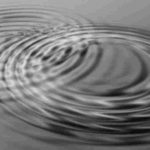
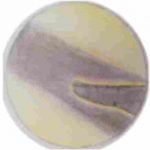
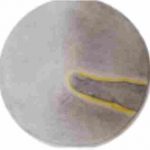
7. Fine dust in a “reversal” or reversal interferometer.
A reversal interferometer gives an image, together with the mirror image. If, for example, we place the finger in the first half of the light path, e.g. in the left half, we see the same finger appear in the right half of the mirror, but now reversed left-right. Both in a light strong field, and in a light weak field, this leads to curious images.
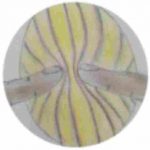
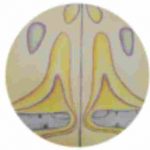
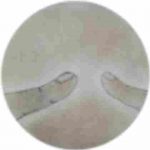
The first two drawings show what can be seen at full brightness. In the last image, the light is dimmed and we again see a faintly luminous band around the finger and its mirror image. In essence, in this way we bring together a disturbed image with an undisturbed image.
8. Fine dust and multiple interference?
So far, we have limited our interference setups to two partial beams unifying with each other. But would it work to have, say, two interferences interfere with each other? What will show up? And could this give opportunities to build setups that are even more sensitive than a single interference of “just” two partial beams?
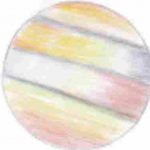
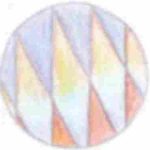
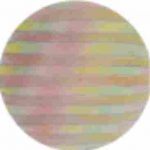
9. Fine dust in a “modified” M&M setup?
Finally, we look back at the M&M experiment we mentioned at the beginning of this text. It indeed did not show uniformly distributed fine stardust. Some generalized that with this, therefore, the whole given “fine dust” was inconsistent with reality. After all the previous experiments, one may still wonder if that firm conclusion is subject to some reservation after all.
Let us think through the experiment of Michelson and Morley. To our knowledge, it was performed with a beam of light split into two sub-beams, each of which reflected on a flat mirror and were afterwards reunited and interfered with each other. Thus there is no concave mirror and no diverging or converging light involved at all. Neither of the two partial beams inside the setup was interfered with. Nor was that the purpose of the experiment. The focus was on what might be outside the interferometer : the uniformly assumed fine stardust.
And what if we redo the M&M experiment, but now in a slightly modified version. Then it occurs to us that with this experiment there is indeed no – although uniformly distributed – fine dust to be found outside the setup, but that inside the setup, on the contrary, its existence can be demonstrated. And if this were so, it seems to us a curious twist of fate. An arrangement intended to deny the existence of (uniform) fine dust then seems, in a modified form, to confirm the very existence of fine dust.
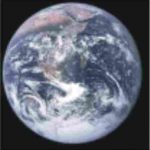
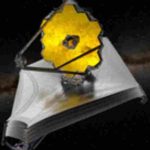
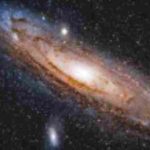
With our largest telescopes, scientists have explored space to its farthest reaches. How incredibly far reaches the field of vision of modern man. And the way to ourselves? Does it also reach that far? What if this powerful science were to put man, ourselves, in the spotlight – literally? And with materials and precision that an amateur tinkerer can only dream of. What a wealth of new information about ourselves could this provide? For now, these remain very fascinating and intriguing questions.
A number of scientists – to put it mildly – do not seem to be very taken with such experiments. Anything that leans slightly toward the paranormal, in their view, could not really be a subject of scientific investigation. Anyone at home in the history of science will hardly be surprised by this. We talked earlier on this site about the distinction between a methodical and an ideological form of science.

